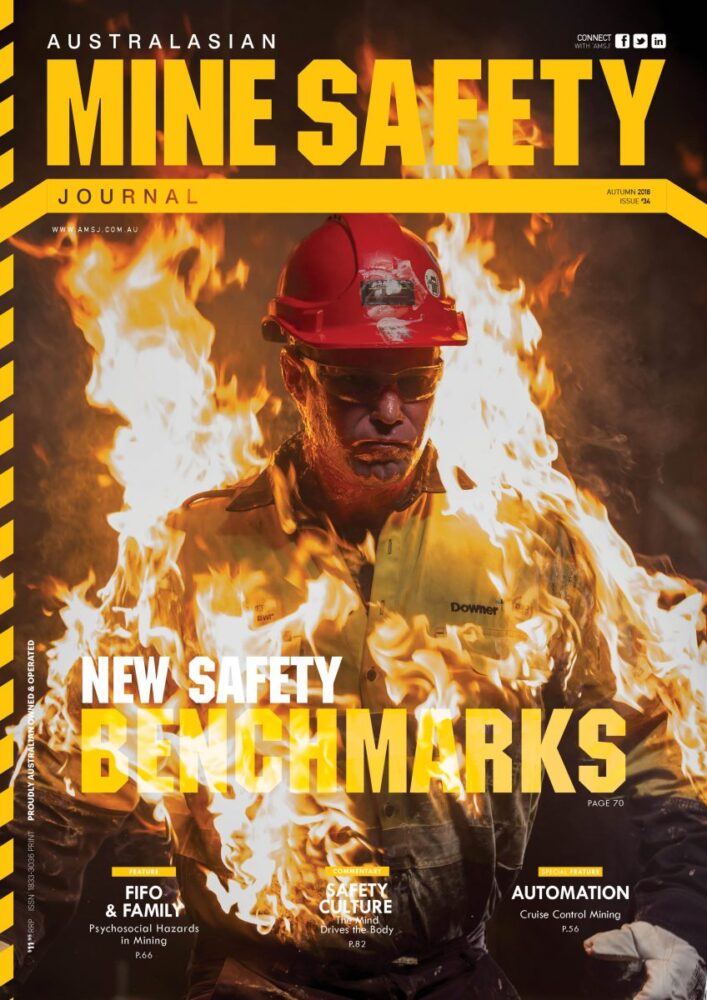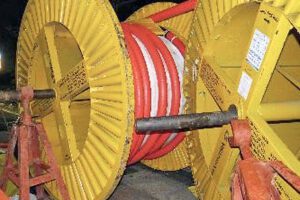Mining operations have emergency response teams to ensure incidents with the potential to threaten lives and assets are responded to. These emergency response teams often assist with nearby emergency situations in the local community or at other nearby mine sites.
The type of training of these specialist teams is very specific due the nature of hazards in mining operations. They are usually trained in dealing with hazardous materials, fires, breathing apparatus and rescues underground or at height.
Mines rescue competitions offer a valued opportunity for ERTs to test and refine their skills across a broad range of realistic emergency response situations. Competitions are the best opportunity available to identify potential gaps in training as well as demonstrate competency and knowledge. It is common for some of the larger mining companies to host in-house ERT competitions between their sites.
Australian Rescue Professionals are fast becoming the mining industries preferred supplier and provider of emergency response solutions in Australia.
The company has developed proactive and compliant models for every emergency response discipline.
The focus on the company is on:
• Provision of emergency service officers (ESOs)
• Training of volunteer ERT teams
• Provision of standby rescue personnel for shutdowns
• Coordinating the organisation’s entire capability across multiple sites.
• Level 2 scenarios and auditing as per the Recognised Standard 8
ARP is providing solutions that are setting new benchmarks within the industry. The company’s owner and Managing Director Jimmy Christiansen shares his story with us.
Tell us about your background… what is your history, your studies and previous work history – and why did safety become so important to you?
I’ve been extremely fortunate during my career; I’ve found myself in some extreme situations over the years and have learnt some very valuable lessons from those experiences. I believe that everything happens for a reason, so I’ve used these experiences to better myself in every aspect of what I’m doing now. My background consists of serving in the Australian Army, a professional stuntman and stunt coordinator for feature films and TV, stunt safety, mining safety and mines rescue.
With the work I do, whether it be running a confined space standby rescue team on a live and operational LNG plant, or coordinating a high-level stunt for a feature film, I often have people’s lives in my hands. The decisions I make have immediate consequences. Because of this, my brain is now hardwired in such a way that I’m comfortable in that headspace required for high-pressure situations.
Without a doubt, safety, and its precision application in hazardous environments has become the cornerstone of my career. For 25 years I’ve often wondered why I’ve put myself
in these situations, and I’ve come to realise that I’m addicted to working in this elevated headspace and working in jobs that require extreme focus.
Why is emergency response training and preparedness so important in the mining industry?
Training is so important because of the requirement to perform in a certain way during a critical situation. In high-level situations where chemicals are flooding your bloodstream, trying to get you to freeze, or turn around and run from the situation, it’s extremely difficult to be effective, you must make coherent decisions with full cognitive function while battling tunnel vision, a dry throat and chaos unfolding around you. I’ve learnt from my own experiences that the only thing that will get you and your team through these situations isthorough preparation, well structured, planned and very specific training.
Special Forces, Police and Fire and Rescue personnel are all proof that constant and specific training is required to be effective during these times of crisis.
From my experience, mines rescue training should be designed to expose ERT members and ESOs to highly probable scenarios that each site could encounter, then drill the teams to the point of unconscious competence in managing that situation, as well as setting up the platforms that each rescue discipline requires.
As an example, an HV /LV (Heavy vehicle / Light vehicle)interaction is going to be managed completely differently from a confined space rescue situation. Response platforms and procedures for each discipline are specific and must be drilled to the point of unconscious competence.
Overall, safety training in general is an absolute must when working in the mining industry. The gear is so big and moves so fast, the general hazards that are present at every link of the mining chain can be, and often are catastrophic when something does go wrong.
For me personally, after facing extreme situations on several occasions, I’ve developed a healthy respect for always being prepared, and I never trust the hidden dangers that lurk beneath the ‘She’ll be right’ mindset that is ingrained within our country’s, and especially our industries psyche.
The irony is that in my experience, those of us that have been involved in these horrible situations and lived through them, have instantly lost that ‘She’ll be right mate’ mindset. It forces you to reassess life, and what’s important.
How does your product differ from others on the market?
We have reverse engineered the closest thing to a magic pill for our clients as we possibly can. Our entire platform and its models, are what we consider the most proactive, effective and compliant platform available. The models we have developed combine the two elements of operational competence and legislated compliance.We have worked closely with our clients to ensure our product is as user-friendly and thorough as possible.
What does this look like?
When a client engages us we immediately look at the current state of operational preparedness, the sites individual risk profile, the site’s broad-brush risk assessment, TARPS and any trending HPIs that the site is currently experiencing. We then design a training program and schedule around those major and critical factors. The training program itself is designed around the Hierarchy of Competence, and the four stages of competence, developed by Noel Burch in the 70s, and now used by every major Special Forces training program in the western world.
We look for the highest probable situation, and the hardest to manage situations that a site could ever face, then drill and train and prepare the capability to the point of operational competence of an extremely high level.
With the compliance aspect, we have developed a mapping document under mentorship from the Mines Inspectorate. We have mapped every piece of relevant legislation, creating a living document that ensures compliance. We have also included other pertinent safety documentation such as relevant guidance notes, safety alerts and safety bulletins that have been released by the Mines Inspectorate.
When a client engages us, we assess the status of operational capability, then methodically move through the document to ensure compliance and preparedness, whilst focusing on high levels of competenceacross the clients risk profile.
We also do this at the organisational level, running our platform across multiple sites for our clients, with transparency and consistency being the focus at this level.
Tell us about a first-hand experience you’ve had where your training has come in useful?
There have been quite a few over the years, which I am extremely proud of, but the most recent one was where one of our clients ERT team managed a high-level medical emergency.
An employee collapsed and went into cardiac arrest in the workshop. The casualty died four times on the workshop floor, and each time the team were able to bring him back using high-level CPR and a defibto keep him alive. He also died on the way to the hospital in the ambulance, and then again on the way to Townsville on the Medivac.
There was also an extraordinary amount of pulmonary oedema (an excess of watery fluid) that blocked off his airway and compounded the already difficult medical response, even though there were literally litres of it coming out of his mouth.
He clinically died 6 times that day yet still survived. He has full cognitive function and is now back in the workshop.
The senior management were also off site on that particular day, and their actions in managing the situation whilst spread across the state, in their support role as duty cardholders was also impeccable. If there was ever a case of being effective in times of crisis, against mounting odds, then this was it.
Both Paramedics and emergency care doctors have acknowledged the fact that if it weren’t for the actions and drilling of the ERT team, he would undoubtedly be dead.
Each and every person involved in managing that incident had a major influence on the outcome, and should be extremely proud of themselves.
Our client wrote a letter expressing gratitude for our work preparing the teams and the organisations capability to be able to deal with this event.
I’ve noticed over the years that each one of these incidents that our teams have encountered have had one underlying trend, is that they could’ve been a lot worse had it not being for the immediate actions of the team, or systems that were in place that mitigated the seriousness of the outcome, to begin with.
The total costs to an organisation of a poorly managed incident, especially where there’s been a loss of life, far outweigh the yearly costs of building and possessing a solid organisational emergency response platform.
Being proactive and prepared for a worst-case scenario event is something that cannot be underestimated for a mining company, or any company operating in a high-risk space. I personally don’t understand why some operators still have their head in the sand in this area hoping it won’t happen to them.
I’ve seen first-hand that when it has happened to an operator who wasn’t prepared, they genuinely struggled to recover(Financially / workforce morale / restrictions from the regulator / productivity) from that major event because it was handled poorly.
How will your platform benefit miners/mine operators?
A mine operator needs this platform if they are not 100% genuinely happy and confident in their emergency response capability. We have designed our platforms into a structured framework, transparent, mapped and proactive. When engaged by our clients, we basically take on the headache and stresses involved in running this critical element of operating.
I know what happens to productivity when the workforce has complete confidence in their emergency response capability.
Our focus is on your capability, so you can focus on productivity.
Our platform, by default, provides the role of a subcontracting ERT coordinator for your organisation without the cost of that wage, steering the capability as per the legislation, ensuring your organisation is in front of its legislated responsibilities and operationally compliant.
Part of our platform involves desktop scenarios for the senior duty cardholders dealing with highly probable scenarios that they could encounter; our focus here is to create an understanding of how to provide effective support in that role.
For the miner, the genuine confidence our platforms instil throughout the workforce speaks volumes, knowing that when you’re at work you have either experienced professionals or professionally trained ERT Teams are responding to the alarm should something go wrong.
Let’s be brutally honest here, it’s all about going home from work the same way we turned up. If I was about to go into a confined space, or trapped in a light vehicle that’s been crushed by a truck, or rolled down a low wall due to bench failure, I would want to know that I have a highly competent team that’s coming for me, that understands the situation and can manage it, and will stop at nothing until I’m free, stable and on my way to hospital.
I know my kids will be eternally thankful that their dad was given every chance to come home.














Add Comment